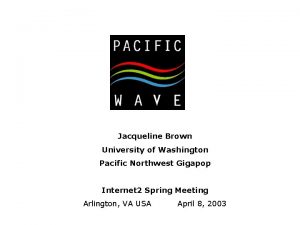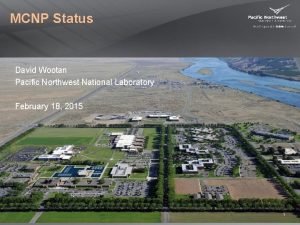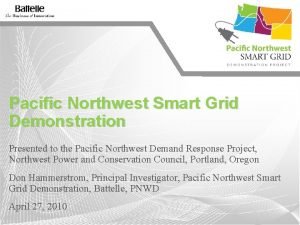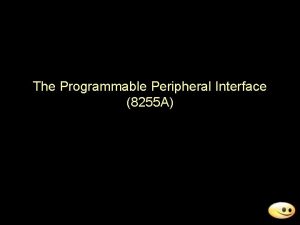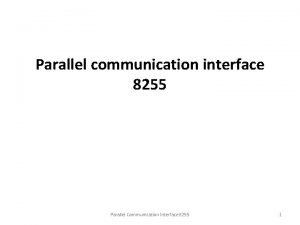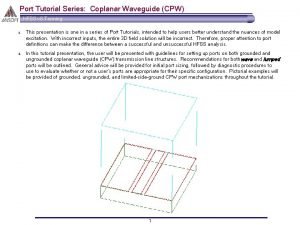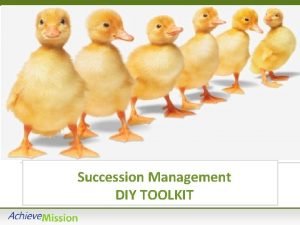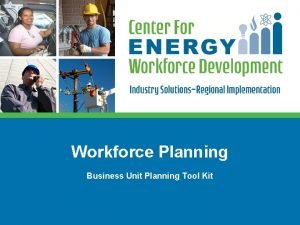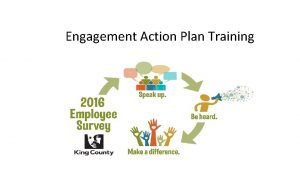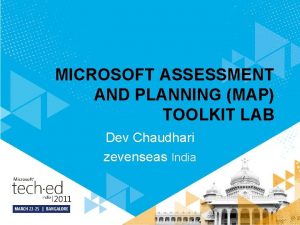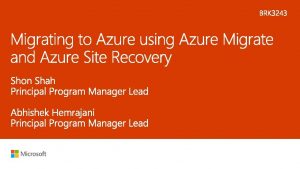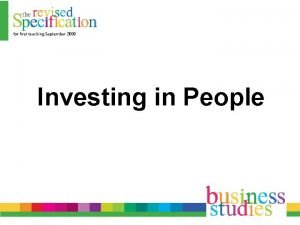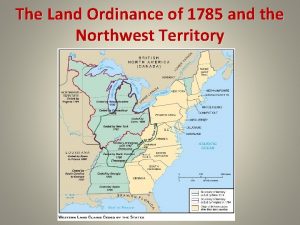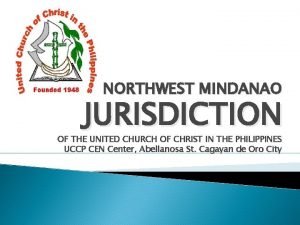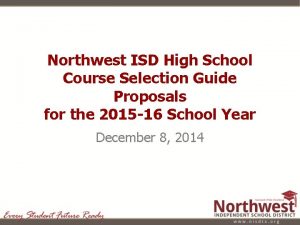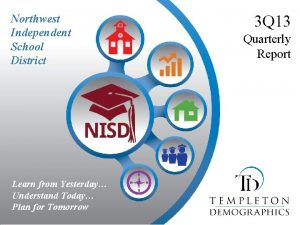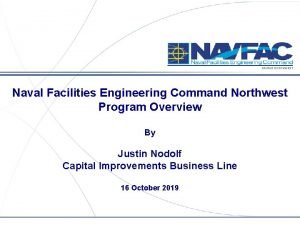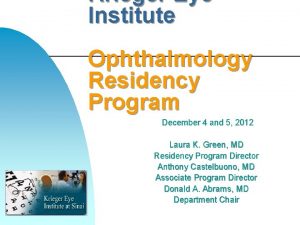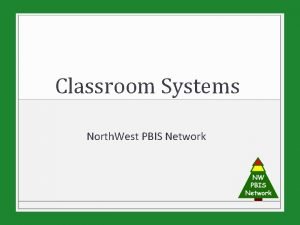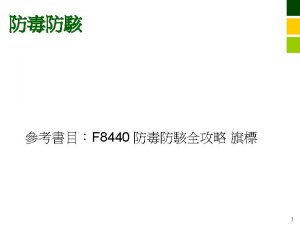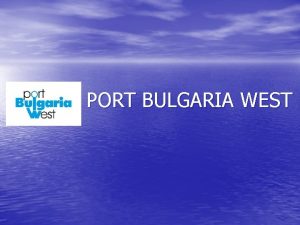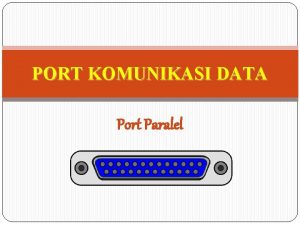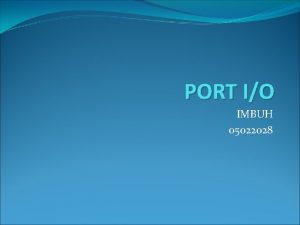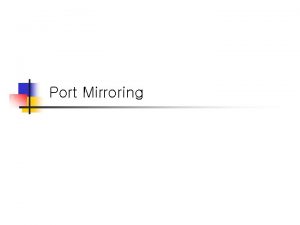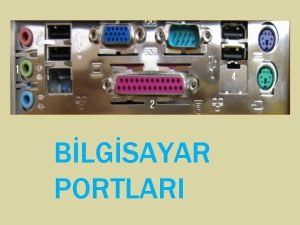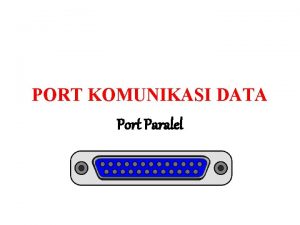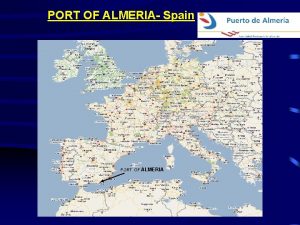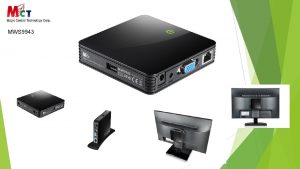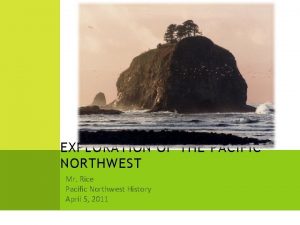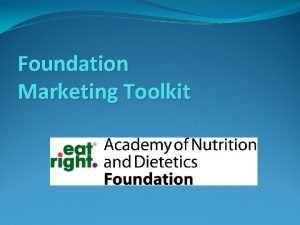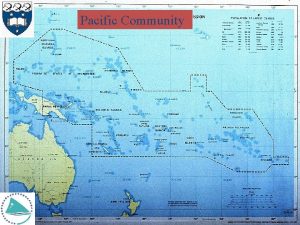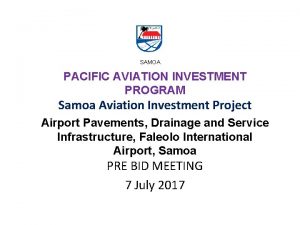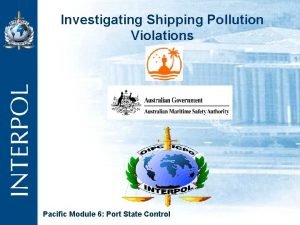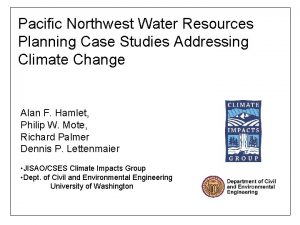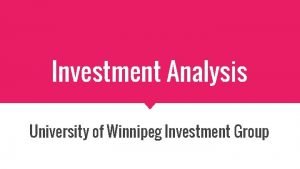Port Planning Investment Toolkit Planning Module Pacific Northwest































- Slides: 31

Port Planning & Investment Toolkit Planning Module Pacific Northwest Ports Webinar August 11, 2020 Wade Morefield 1200 New Jersey Ave. , SE | Washington | DC 20590 Office & Waterways Planning w w w. d oof t. g. Ports ov

2 Office of Ports & Waterways MISSION Improve the Maritime Transportation System, including Ports, Connectors and Marine Highways through Investment, Integration and Innovation to meet the current and future needs of the Nation. VISION A capable, connected system – water, road and rail – to benefit every American. GOAL Increase national cargo capacity and improve the reliability of freight movements through ports. Legislative Authority - Port development - 46 USC 50302 2

Port Planning & Investment Toolkit – Background Port Planning & Investment Toolkit (PPIT) A Maritime Industry Joint Initiative A joint effort between MARAD and AAPA The Toolkit modules can be used to help ports: – – – – Evaluate port conditions; Define problems; Plan thoroughly; Navigate the preplanning process; Engage private partners; Present actionable needs; Access available funding; and Complete projects The toolkit helps ports obtain funding http: //www. aapa-ports. org/PPIT 3

Port Planning & Investment Toolkit – Format 4

Planning Module A “build it and they will come” strategy has little likelihood of success. • A project based on insufficient planning generally ends with unsustainable results. • Projects based on a thorough evaluation of data, stakeholder involvement, and alternatives will be much more likely to generate long term economic benefits (REVENUE). 5

Planning Module – Introduction 6

1. Initiate – Kickoff The first step of project initiation is a series of kickoff meetings with key project members and stakeholders. The kickoff meetings should address the following items, at a minimum: • Project team and stakeholder points of contact; • Roles and responsibilities; • Project quality control and communication protocols; • Sources of information; • Work program, milestones, and schedule; • Key project issues and sensitivities, including outreach and other permitting requirements; and • Guiding elements. 7

1. Initiate – Guiding Elements Provide a Basis for: • Developing new project elements; • Prioritizing competing elements; and • Comparing alternatives as the project planning progresses. 8

1. Initiate – Data Collection Data collection begins during kickoff, but continues throughout the project development process. The project team should develop an understanding of: • What data is available; • The applicability of data to the project; and • The expected uses of the collected data. 9

1. Initiate – Stakeholder Engagement Stakeholder Outreach • Informs the overall vision; • Aids in ensuring plans best serve ALL objectives; and • Identifies potential roadblocks early on. 10

1. Initiate – Stakeholder Engagement, cont. PROJECT ADVISORY PANEL A Project Advisory Panel is recommended to: • Help form/refine project goals and objectives; • Identify internal and external stakeholders; • Provide insights on external forces that may impact the project; • Facilitate stakeholder connections and communication; • Secure community support for the project; • Review and evaluate findings from interviews and data analyses; and • Provide validation and quality assurance on the draft and final project planning documents. 11

1. Initiate – Stakeholder Engagement, cont. 12

1. Initiate – Stakeholder Engagement, cont. WORKING WITH YOUR MPO Port owners should partner with their MPOs to ensure that their plans are complementary, and ports should involve their MPOs when planning projects that will impact the local transportation network. Certain port projects should also be incorporated into local, regional and state planning documents such as a city’s capital improvement program (CIP), an MPO Transportation Improvement Program (TIP), Statewide Transportation Improvement Program (STIP), a Long Range Transportation Plan (LRTP), or other similar planning and funding documents. Incorporation of projects into these plans can be a first step in securing funding through the Federal-aid formula programs such as the National Highway Freight Program. 13

2. Quantify QUANTIFY CAPABILITIES, DEMANDS, AND NEEDS 1. Existing Conditions • Assets • Operations • External Influences • Volumes and Trade Flows • Capacity 2. Project Drivers • Regulatory/Environmental • Market Dynamics • Competitive Position • Demand Forecast 3. Project Needs • Gap Analysis 14

2. Quantify – Existing Conditions, Assets An inventory of assets is fundamental to understanding your strengths. More importantly, it may identify weaknesses that may need to be addressed. 15

2. Quantify – Existing Conditions, Operations 16

2. Quantify – Existing Conditions, External Influences EXTERNAL INFLUENCES External influences include but are certainly not limited to programs, policies, programs, priorities, laws, and regulations relating to: • Land Use and Zoning Restrictions; • Political Realities; • Environmental Impacts (good or bad); and • Regulatory Requirements. It’s important to communicate how a proposed project might assist in achieving wider regional goals. 17

2. Quantify – Existing Conditions, Volumes and Trade VOLUMES AND TRADE FLOWS The project plan should reflect a thorough understanding of the port’s role in its wider marketplace. The research and analysis should combine statistically valid and verified data collected during the Data Collection step to fully inform the planning process on port volumes, origins and destinations, commodity types, and transportation modes. 18

2. Quantify – Existing Conditions, Capacity 19

2. Quantify – Existing Conditions, Capacity, cont. 20

2. Quantify – Project Drivers PROJECT DRIVERS Project Drivers are described in the toolkit as “forces external to a port that impact a potential project and that may be the impetus behind a project. ” Examples of Project Drivers provided in the toolkit include: • Regulatory Environment – land use, transportation, environment, labor, health and safety, security, community, funding, etc. ; • Market Dynamics; • Competitive Position; and • Demand Forecast. Identification of the project drivers allows the generation of practical and effective project alternatives that will fulfill the project objectives. 21

2. Quantify – Project Drivers, Market Dynamics 22

2. Quantify – Project Drivers, Competitive Position 23

2. Quantify – Project Drivers, Demand Forecast SAMPLE FACTORS FOR DEMAND FORECAST • What markets/products could reasonably be attracted to the port? • What are the projections for the fundamental drivers of these product volumes? • What are the origins and destinations of the products? • What advantages does the port have in serving these markets? • Where does the port stand in relation to carriers’ service rotations and how might this change in the future (e. g. , as a result of evolving alliances or modifications in ship size)? • What are “upstream” and “downstream” ports focused on? • What are the port’s advantages in terms of inland transportation for products, foreign origins or destinations? • What share does the port have of volumes for those markets (products, foreign regions, inland regions) that it could realistically serve? • What are competitive ports’ shares of these markets? • What advantages does the port have, or could potentially have, versus competitive ports in these markets (e. g. inland transportation time or cost)? 24

2. Quantify – Project Needs GAP ANALYSIS Assesses the differences between a port’s capabilities and performance and its opportunities and objectives relative to a potential project. PROJECT NEEDS Based on Gap Analysis. May include changes to infrastructure, equipment, or operations required to address the Project Drivers. 25

3. Form 26

3. Form – Project Context 27

3. Form – Alternatives Development 28

3. Form – Alternatives Assessment 29

3. Form – Refinement of Alternatives 30

Questions? Contact Information Wade Morefield Office of Ports & Waterways Planning Maritime Administration (202) 366 -6025 Wade. Morefield@dot. gov Ideas?
 Pacific northwest rainforest
Pacific northwest rainforest Pacific northwest serial killers
Pacific northwest serial killers Pacific northwest raven
Pacific northwest raven Pacific northwest gigapop
Pacific northwest gigapop Pacific northwest food
Pacific northwest food Pacific northwest college credit
Pacific northwest college credit Pacific northwest national laboratory
Pacific northwest national laboratory Pacific northwest smart grid demonstration project
Pacific northwest smart grid demonstration project Pacific northwest research station
Pacific northwest research station Features of 8255a
Features of 8255a 8255 parallel communication interface
8255 parallel communication interface Wave port in hfss
Wave port in hfss Fixed investment and inventory investment
Fixed investment and inventory investment C device module module 1
C device module module 1 Talent review chart
Talent review chart Strategic workforce planning toolkit
Strategic workforce planning toolkit Employee engagement action planning toolkit
Employee engagement action planning toolkit Microsoft assessment and planning
Microsoft assessment and planning Microsoft assessment and planning
Microsoft assessment and planning People investment planning
People investment planning A plane flies northwest out of o'hare
A plane flies northwest out of o'hare What is the significance of the northwest ordinance? *
What is the significance of the northwest ordinance? * Northwest microscope
Northwest microscope Northwest ordinance of 1785
Northwest ordinance of 1785 Northwest african countries
Northwest african countries Northwest mindanao
Northwest mindanao Northwest isd course selection guide
Northwest isd course selection guide Northwest isd ranking
Northwest isd ranking Navfac northwest
Navfac northwest Krieger eye institute residency
Krieger eye institute residency Northwest isd jobs
Northwest isd jobs Northwest pbis
Northwest pbis



